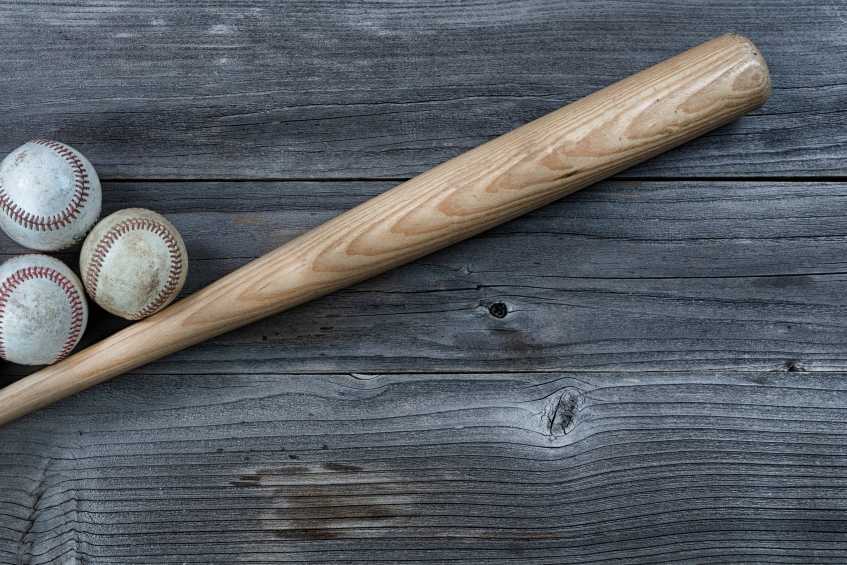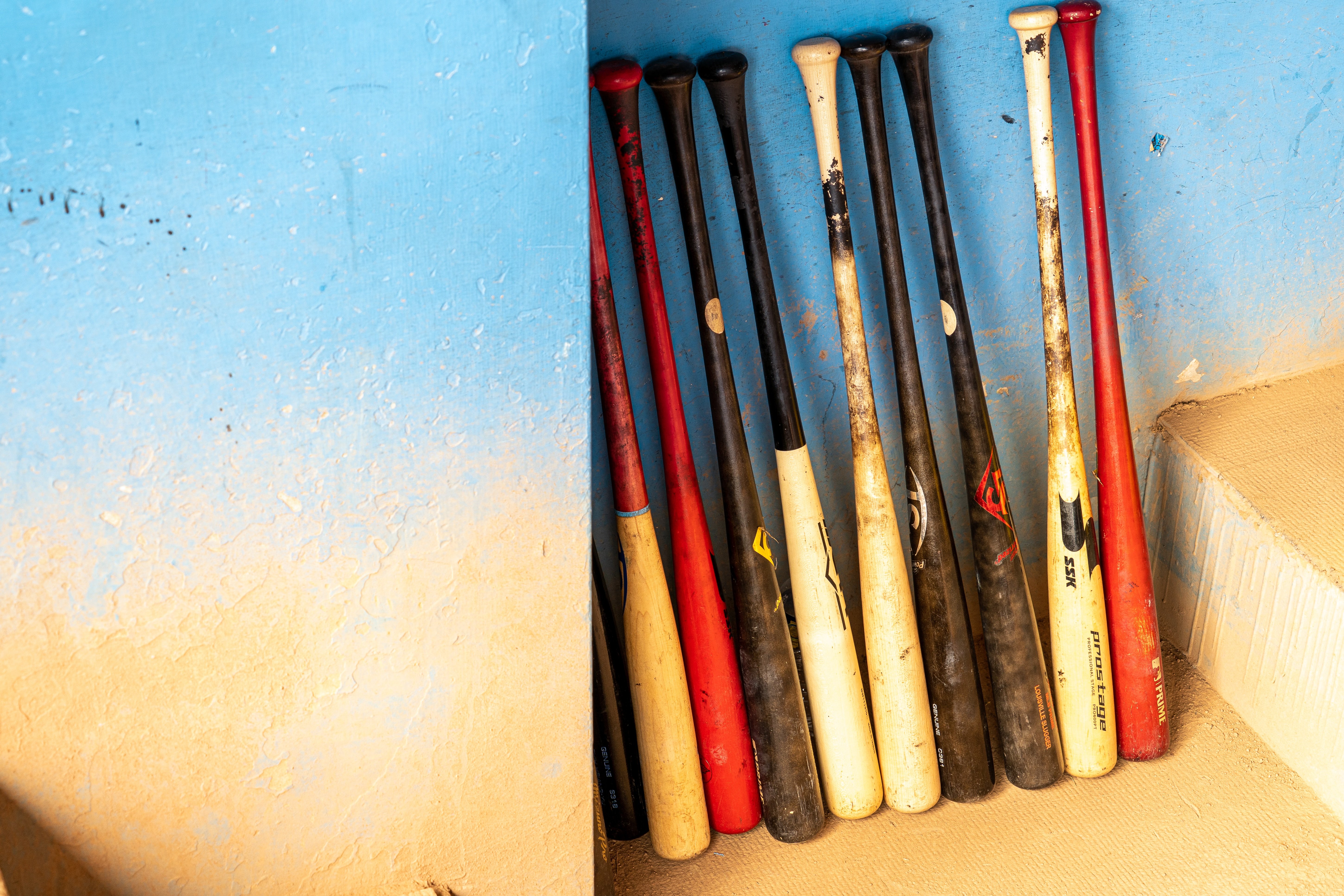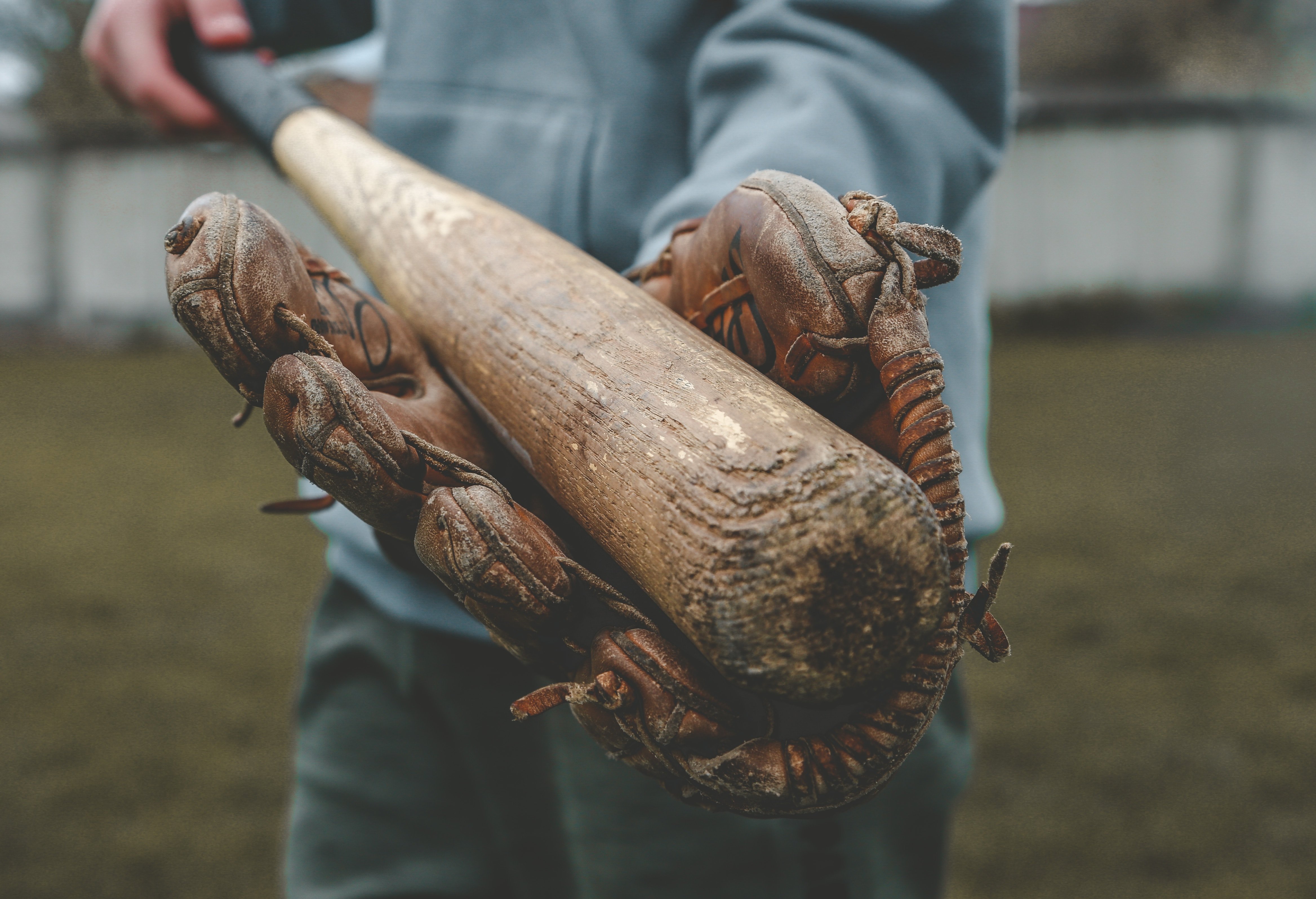
Welcome to our comprehensive guide to wood baseball bats! Wooden bats have been a staple in baseball for generations, and they continue to be a popular choice among players of all levels. Not only do they provide a classic look and feel, but they also offer a unique performance that can't be replicated with metal or composite bats.
In this post, we'll take a deep dive into everything you need to know about wooden baseball bats. We'll cover the different types of wood used for bats, including the pros and cons of ash, maple, birch, and even bamboo wood. We'll also explore how wooden bats are made, how the wood is selected, and the major manufacturers in the industry. Plus, we'll share some tips on where to find cheap wooden baseball bats for sale.
Whether you're a seasoned player or just starting out, this guide will help you understand the nuances of wooden bats and make an informed decision when purchasing your next one. So, let's get started and explore the world of wood baseball bats!
Wooden baseball bats have been used since the earliest days of the sport, and they remain a popular choice among players of all levels today. While there are various materials used to make baseball bats, wooden bats offer a unique feel and sound that many players find more authentic and enjoyable.
However, not all wooden bats are created equal. There are several types of wood used for baseball bats, each with its own advantages and disadvantages. The most common types of wood used for baseball bats are ash, maple, birch, and bamboo.
Ash wood is one of the most popular materials used for baseball bats, and it has been used in the sport since the 1800s. Ash is known for its lightweight and flexibility, making it easy to swing and allowing players to generate more bat speed. Ash bats also have a larger sweet spot, which can help players hit the ball with more power. However, ash bats are not as durable as other types of wood and are more prone to breaking or splintering.
Maple wood is another popular choice for baseball bats. It is harder and denser than ash, which can help players hit the ball farther and with more accuracy. Maple bats are also more durable than ash bats and less likely to break. However, maple bats are heavier than ash bats, which can make them more difficult to swing, especially for younger or smaller players. Maple bats also have a smaller sweet spot than ash bats, which can make them less forgiving for hitters who don't make solid contact with the ball.
Birch wood is a newer option for baseball bats that has gained popularity in recent years. Birch bats are made from a combination of ash and maple, which gives them a unique blend of properties. Birch bats are lightweight and flexible like ash, but also durable like maple. They have a larger sweet spot than maple bats but a smaller sweet spot than ash bats. Birch bats are also less likely to break or splinter than ash bats but not as heavy as maple bats.
Bamboo wood is another option for baseball bats, although it is less common than ash, maple, or birch. Bamboo bats are made from a combination of bamboo and other types of wood, and they are known for their durability and hardness. Bamboo bats are less likely to break or splinter than other types of wood bats, and they have a larger sweet spot than most other wooden bats. However, bamboo bats can be heavier than other wooden bats, and they may not provide the same level of performance as some of the other types of wood. For more, check out our list of the best youth wood bats as well.

Photo by Winston Chen
Now that we've covered the different types of wood used for baseball bats, let's take a look at how wooden bats are made. The process of making a wooden baseball bat is complex and involves several steps, from selecting the right type of wood to finishing the bat with a final coat.
The first step in making a wooden baseball bat is selecting the right type of wood. Most manufacturers use high-quality wood that has been kiln-dried to remove moisture and ensure consistency. The wood is then inspected for any defects, such as knots or cracks, and sorted based on its quality.
Once the wood has been selected, it's time to start shaping the bat. The bat is cut to the desired length and then turned on a lathe to create a consistent shape. This process involves removing excess wood and shaping the bat to its final form. The handle is then added to the bat, and the bat is sanded to create a smooth surface.
After the bat has been shaped and sanded, it's time to add the finishing touches. The bat is often finished with a final coat of varnish or lacquer, which helps to protect the wood and enhance its appearance. Some manufacturers also add a grip to the handle to improve the player's grip and prevent slippage.
Finally, the bat is inspected for quality and any defects before being packaged and sent to retailers or directly to customers. Some manufacturers may also offer custom engraving or personalization options for their wooden baseball bats.
It's important to note that not all wooden baseball bats are made using the same process. Some manufacturers may use different techniques or materials, which can affect the final product's performance and durability. When choosing a wooden baseball bat, it's important to do your research and select a bat from a reputable manufacturer with a history of producing high-quality wood bats.
Selecting the right type of wood for a baseball bat is crucial to its performance and durability. The wood used for baseball bats must be strong, durable, and able to withstand the impact of hitting a baseball. This means that not all types of wood are suitable for making baseball bats.
One of the most popular types of wood used for baseball bats is maple. Maple is a dense, hard wood that is known for its strength and durability. Maple bats are less likely to break than bats made from other types of wood, which is why many professional players prefer maple bats.
Another popular wood for baseball bats is ash. Ash is a lightweight wood that is known for its flexibility and elasticity. Ash bats are often preferred by players who value the bat's ability to flex upon impact, which can help to generate more power.
Bamboo is another type of wood that is sometimes used to make baseball bats. Bamboo bats are lightweight and durable, making them a popular choice for players who prefer a lighter bat. However, some leagues do not allow bamboo bats because they are considered to be composite bats and are not made entirely of wood.
When selecting a wooden baseball bat, it's important to consider the type of wood used and how it will affect the bat's performance. Some types of wood may be more suitable for certain players or playing styles, so it's important to choose a bat that fits your needs and preferences.
In addition to the type of wood, it's also important to consider the quality of the wood used. High-quality wood that has been properly dried and inspected for defects will produce a better bat than wood that is of lower quality. Reputable manufacturers will often provide information about the wood used in their bats, including the type of wood and how it was selected and processed.

Photo by Diana Polekhina
Wooden baseball bats require a bit of maintenance to ensure they last as long as possible. Here are some tips for caring for and maintaining your wooden baseball bat:
Store Your Bat Properly: It's important to store your bat in a cool, dry place to prevent warping or cracking. Avoid storing your bat in extreme temperatures, such as a hot car trunk or a damp basement.
Clean Your Bat Regularly: Dirt and debris can accumulate on your bat over time, which can affect its performance. To clean your bat, simply wipe it down with a damp cloth after each use. Avoid using harsh chemicals or solvents, as these can damage the wood.
Keep Your Bat Dry: Moisture can cause wood to warp or crack, so it's important to keep your bat dry. If your bat gets wet, dry it off immediately with a towel or cloth. Avoid leaving your bat in a wet environment, such as a wet bag or glove.
Rotate Your Bat: To prevent one area of the bat from becoming worn down, it's important to rotate your bat periodically. This will ensure that the bat wears evenly over time.
Sand Your Bat: Over time, your bat may become rough or splintered. To smooth out any rough spots, lightly sand your bat with a fine-grit sandpaper. Be careful not to sand too much, as this can damage the wood.
Wax Your Bat: Applying a coat of wax to your bat can help protect it from moisture and other elements. Simply apply a small amount of wax to a clean cloth and rub it onto the bat, then buff it with a clean cloth.
By following these tips, you can help ensure that your wooden baseball bat lasts as long as possible and performs at its best.
When it comes to wooden baseball bats, there are several major manufacturers in the market. Here are some of the top manufacturers and a brief overview of their products:
Louisville Slugger: Louisville Slugger is one of the oldest and most recognized wooden bat manufacturers in the world. They offer a wide range of wooden bats made from ash, maple, and birch wood. Louisville Slugger has a variety of models, including their popular C271 and M110 models.
Marucci: Marucci is a relatively new player in the wooden bat market but has quickly gained a reputation for quality and craftsmanship. They offer a range of maple, ash, and birch bats, including their popular AP5 and CU26 models. Marucci also offers customized bats with personalized engravings.
Old Hickory Bat Co.: Old Hickory Bat Co. is a small, family-owned business that has been making wooden bats since 1999. They specialize in custom-made bats and offer a variety of wood options, including maple, ash, and birch. Their bats have been used by several Major League Baseball players, including Paul Goldschmidt and Bryce Harper.
Rawlings: Rawlings is another well-known brand in the baseball world and offers a range of wooden bats, including their popular VELO and Adirondack models. Rawlings uses high-quality wood, such as ash and maple, to produce their bats, which are known for their durability and performance.
Easton: Easton is a company that produces both wooden and aluminum Little League bats. Their wooden bats are made from high-quality maple wood and are known for their balance and durability. They offer a range of models, including their popular Mako Torq and Pro 110 models.
These are just a few of the major manufacturers in the wooden bat market. While each company offers different models and wood types, they all share a commitment to quality and craftsmanship.

While high-end wooden bats can cost hundreds of dollars, there are several options for finding cheap wooden baseball bats. Here are some tips on where to find affordable wooden bats:
Clearance Sales: Many sporting goods stores have clearance sales at the end of each season, where you can find discounted wooden bats. You may have to sift through a lot of products, but it's worth checking out if you're on a budget.
Online Retailers: There are several online retailers that offer cheap wooden baseball bats. Sites like Amazon, eBay, and Craigslist have a wide range of options, and you can often find good deals on used bats.
Secondhand Stores: Thrift stores and secondhand sporting goods stores are also a great place to look for cheap wooden bats. While the selection may be limited, you can often find good quality bats for a fraction of the cost of a new one.
Local Batting Cages: Some local batting cages offer wooden bats for use during practice or lessons. You may be able to buy these bats at a discounted price, as they may have some wear and tear.
Direct from Manufacturers: Some wooden bat manufacturers, such as Louisville Slugger and Rawlings, offer discounted or factory seconds bats on their websites. These bats may have minor cosmetic defects but are still high-quality and can be purchased at a lower price.
Yard Sales and Flea Markets: You never know what you might find at a yard sale or flea market. Keep an eye out for wooden bats and you may be able to snag a good deal.
Remember, when purchasing a cheap wooden bat, it's important to check for quality and durability. Make sure the bat is made from a good quality wood and doesn't have any cracks or defects that could impact its performance.
In conclusion, wooden baseball bats have been a staple in the game of baseball for over a century. They offer a traditional look and feel that many players still prefer over modern composite and aluminum bats. From the selection of wood to the manufacturing process, every detail of a wooden bat can impact its performance on the field. Therefore, it is important to understand the different types of wood and manufacturing techniques used by manufacturers when selecting a wooden bat.
While wooden bats can be expensive, there are ways to find affordable options. Clearance sales, online retailers, and secondhand stores are all great places to start your search for a cheap wooden baseball bat. However, it's important to remember that quality should never be compromised for price. Always check for durability and make sure the bat is made from a high-quality wood.
In the end, whether you're a professional player or a casual weekend warrior, there's a wooden baseball bat out there for everyone. By understanding the types of wood, manufacturing processes, and where to find affordable options, you can make an informed decision when purchasing a wooden baseball bat. So go ahead and take a swing with a wooden bat - you just might find that it adds a new level of excitement and tradition to your game.
See Also: Best BBCOR Bats 2023
Chris Sloan is a former baseball league commissioner and travel baseball coach who has made significant contributions to the sport. In 2018, he founded selectbaseballteams.com, a website that helps parents find youth and travel baseball teams in their local areas. Since its launch, the website has experienced impressive growth, offering a wealth of resources including teams, news, tournaments, and organizations. Chris's unwavering passion for baseball and his innovative approach to connecting parents with quality baseball programs have earned him a respected reputation in the baseball community, solidifying his legacy as a leading figure in the world of youth and travel baseball.
There are 0 comments on "The Pros and Cons of Different Types of Wood Baseball Bats"
CameronPugh says:
"Such a unique perspective on the game..."
On Such a unique perspective on
chandler allen says:
"Hi my name is chandler, i’ve enjoyed..."
On Wanting to tryout for summer ball. as an 18 year old
david graham says:
"With no current MLB team in Canada,..."
On With no current MLB team in